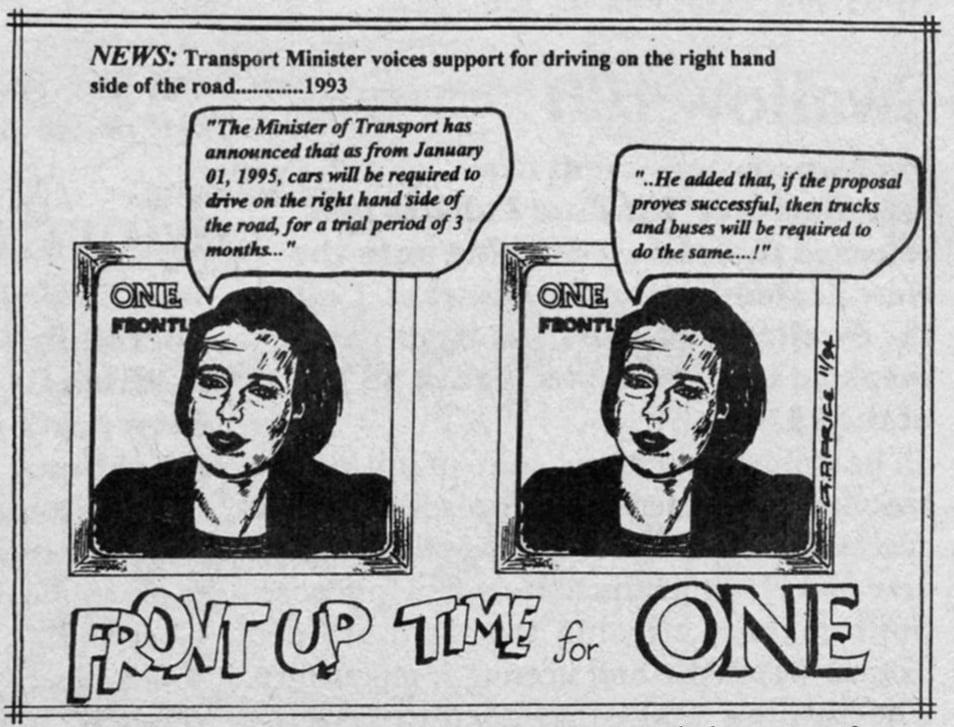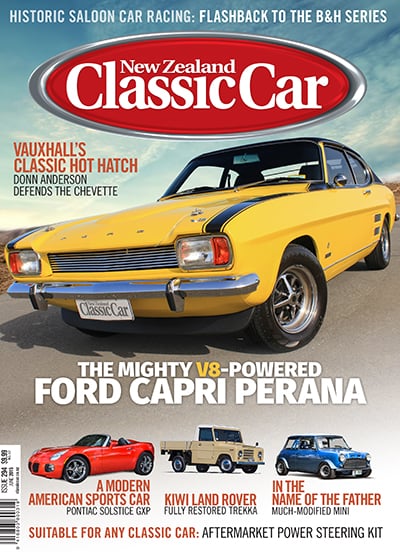The year that was 2015 was a milestone event for the New Zealand Classic Car team as they reached Issue No. 300! A creditable effort, I reckon. The June 2015 issue was a milestone for this writer, marking my debut with the magazine back in 1995.
How the heck did I ever get involved in New Zealand Classic Car, I hear you ask? I guess you could say it all started (for me, anyway) when I picked up a copy of the third issue of what was then NZ Classic Car Directory. In the late 1980s, I was living in Dunedin and had just acquired the (then) only 1959 Cadillac Fleetwood in New Zealand. At that time there were seven 1959 Cadillacs in total within our shores, and three of those were owned by the one individual in Auckland — today, there are 79! Another long-term writer for this magazine, Trevor Stanley-Joblin, wrote a ‘My Classic & I’ feature on my Caddy, that short article appearing in issue No. 11.

Toon town
By the time I moved to Christchurch with my wife in 1991, we’d become regular purchasers of the magazine. At the time, I was a bit of a cartoonist and saw something in the local paper that I thought had potential. The Transport Minister had just returned from an overseas junket and, apart from complaining that he had not been given his First Class ‘goodies bag’, he announced publicly that he thought New Zealanders should be driving on the right-hand side of the road. Around that same time, Anita McNaught was one of the TV’s newsreaders, so the cartoon I drew was Anita announcing the Transport Minister’s idea — with some editorial licence, of course. I had the Minister quoted as saying that, “As from January 01, 1995, cars will be required to drive on the right-hand side of the road, for a trial period of three months … if this proves successful, then trucks and buses will be required to do the same!” I subsequently sent the cartoon to this magazine’s founding editor, Greg Vincent, and it was included in the January 1995 Clubscene column.
Getting the lead out
In Christchurch, my wife and I were regular attendees at the Canterbury Concours d’Élégance and, as luck would have it, Greg Vincent attended several of these shows — so I took the opportunity to introduce myself. This was the time when another former magazine writer — that lovely Canadian, Trish Duffy— was writing about a proposal concerning a possible switch to unleaded petrol in New Zealand, a prospect that sent shock waves through the classic-car fraternity. Trish also received some hate mail and, as a consequence, wanted to stop writing about petrol. Not being bothered by a few threats from vested-interest groups, I agreed to take over from Trish, who had already done much of the research, and happily provided me with boxes of documents from which I was able to take up the cudgels without much extra effort.
It was an interesting time, and more than my fair share of articles featuring my efforts to halt the onset of unleaded petrol were printed in various newspapers. Alas, the campaign was unsuccessful, and when the dreaded unleaded was finally introduced, I happened to be touring the US. With Trish also out of the country and the media itching to get someone to comment, Greg Vincent pretty much ended up as the fall guy.
As some of you will recall, the main problem with the early batches of unleaded was high levels of aromatics — in the case of toluene, which was used to boost the octane level, the level was as high as 54 per cent. This is what caused all the petrol fires and leaks, as it destroyed the rubber seals in everything. Oil companies went into overdrive to mount damage control, and lots of people received ‘confidential’ settlements.
Interestingly — I asked this question at the time, and I still do — if unleaded is so wonderful, how come we still have to use leaded Avgas in piston-engined planes, jet boats, motor racing and the like? I’m still waiting for an answer.
Grandstanding Gabriel
Those with long memories will recall the magazine’s Of Oil Leaks and Old Leather, a regular column penned by Gabriel. I started doing a cartoon strip called ‘Grandstanding Gabriel’ — my caricature was quite realistic, because I knew the real person behind the pen name, having worked with him briefly in 1970. Sadly Gabriel, aka Nigel Roskilly, is no longer with us — but if nothing else he knew everything about Jaguars and, fortunately for me and my cartoons, also had a good sense of humour.
From time to time, and in addition to my regular column, I have penned a few feature articles on various cars, usually on New Zealand Classic Car of the Year place getters. On one such memorable occasion I had the privilege of writing about Ian Clements’ Jaguar XK140 — the best bit being that I got to drive it on two occasions, the first on a road test out to Darfield and back, and again during the magazine’s photo shoot at Ruapuna, when Ian graciously let me take the mighty beast around the full circuit for a few laps. I didn’t squeal the tyres on the hairpin, honest!
All in all, it has been an interesting 20 years. I’ve really enjoyed being a contributor to the magazine, one that I’ve seen develop into a top publication, and one I am very proud (and privileged) to still be a part of. I’ve worked out that my readership now totals at least 29 — 30, if Allan reads my article twice! I can even recall Trevor Stanley-Joblin telling us all ages ago that, “One day Japanese cars will become classics,” at the time I didn’t entirely agree with him, but now even I’m writing features on Japanese classics — albeit owned by an enthusiastic son!
It doesn’t seem like 20 years — where has all that time gone?
This article was originally published in New Zealand Classic Car Issue No. 294. You can pick up a print copy or a digital copy of the magazine below:



